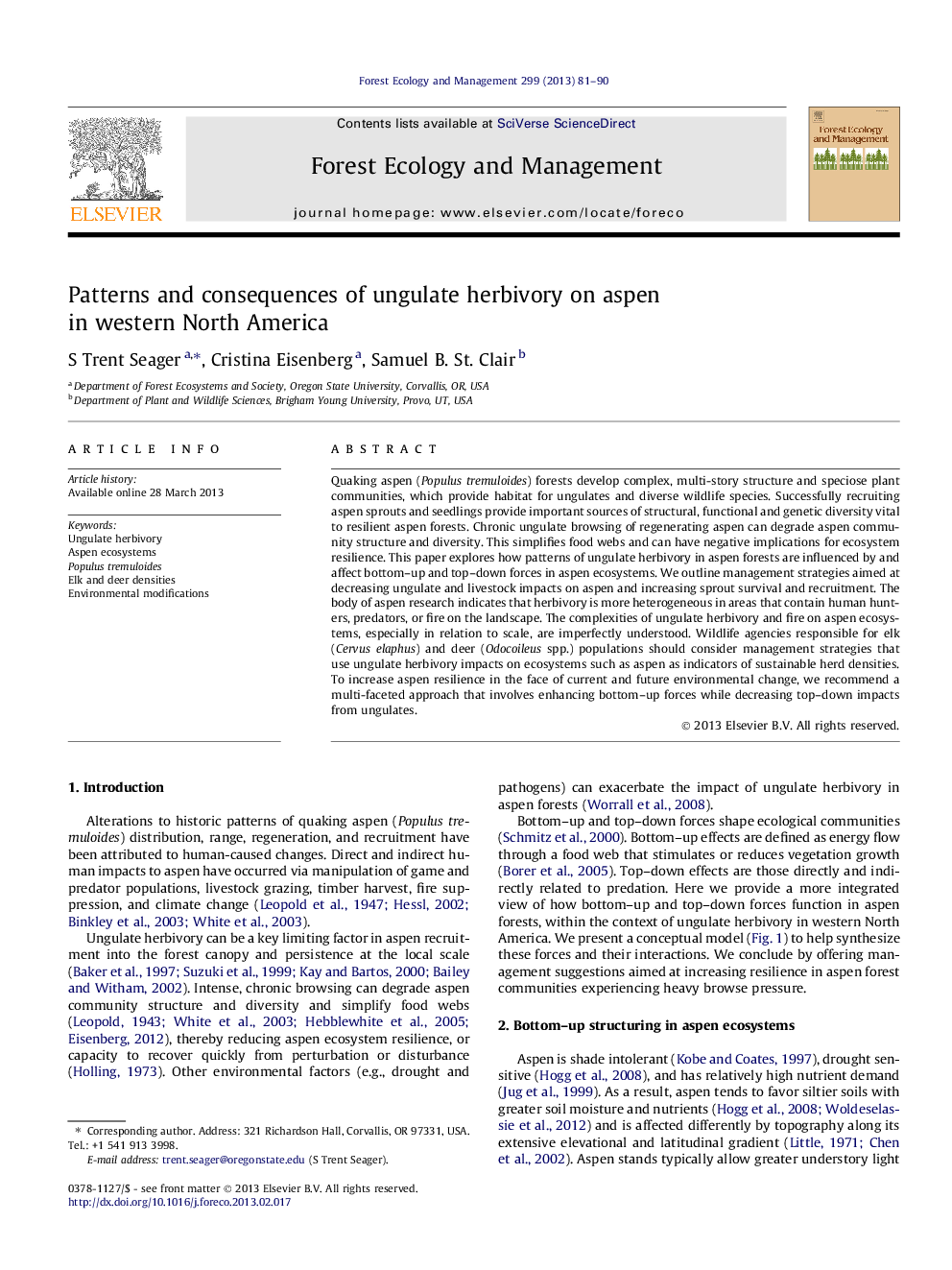| کد مقاله | کد نشریه | سال انتشار | مقاله انگلیسی | نسخه تمام متن |
|---|---|---|---|---|
| 86958 | 159225 | 2013 | 10 صفحه PDF | دانلود رایگان |

Quaking aspen (Populus tremuloides) forests develop complex, multi-story structure and speciose plant communities, which provide habitat for ungulates and diverse wildlife species. Successfully recruiting aspen sprouts and seedlings provide important sources of structural, functional and genetic diversity vital to resilient aspen forests. Chronic ungulate browsing of regenerating aspen can degrade aspen community structure and diversity. This simplifies food webs and can have negative implications for ecosystem resilience. This paper explores how patterns of ungulate herbivory in aspen forests are influenced by and affect bottom–up and top–down forces in aspen ecosystems. We outline management strategies aimed at decreasing ungulate and livestock impacts on aspen and increasing sprout survival and recruitment. The body of aspen research indicates that herbivory is more heterogeneous in areas that contain human hunters, predators, or fire on the landscape. The complexities of ungulate herbivory and fire on aspen ecosystems, especially in relation to scale, are imperfectly understood. Wildlife agencies responsible for elk (Cervus elaphus) and deer (Odocoileus spp.) populations should consider management strategies that use ungulate herbivory impacts on ecosystems such as aspen as indicators of sustainable herd densities. To increase aspen resilience in the face of current and future environmental change, we recommend a multi-faceted approach that involves enhancing bottom–up forces while decreasing top–down impacts from ungulates.
Figure optionsDownload as PowerPoint slideHighlights
► Aspen ecosystems have a bottom–up structure of soil, light, and resources.
► Ungulate browsing impacts soils, plant community, and stand demography.
► Aspen uses chemical defense and tolerance as strategies to cope with herbivory.
► Environmental modifiers of herbivory include climate change, fire, predators, and humans.
► Fire, ungulate density, and land management can modify aspen ecosystem resilience.
Journal: Forest Ecology and Management - Volume 299, 1 July 2013, Pages 81–90